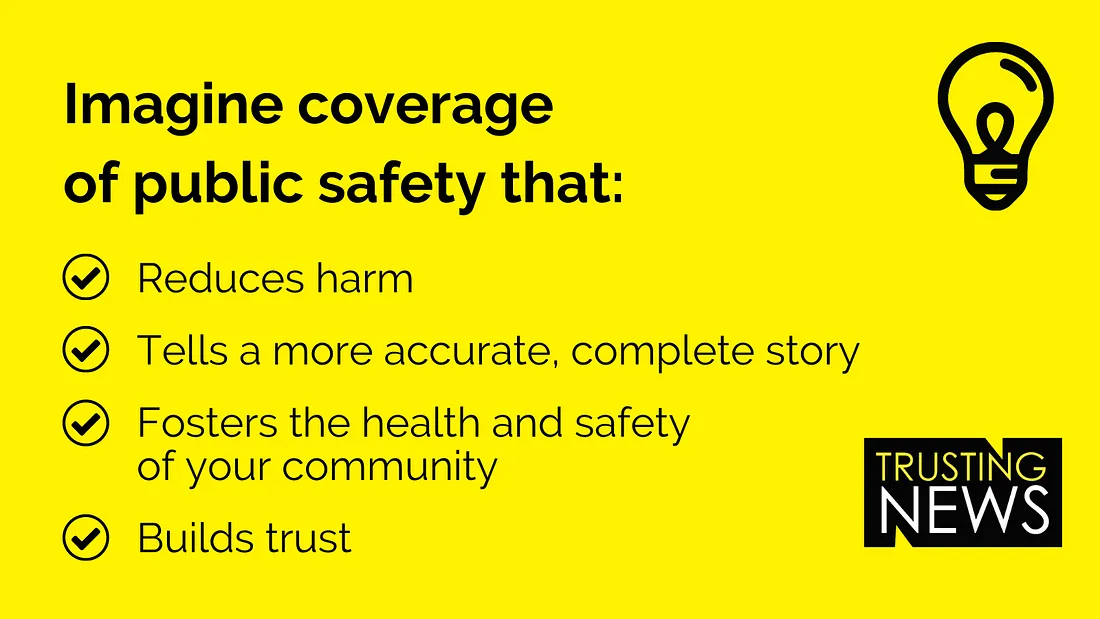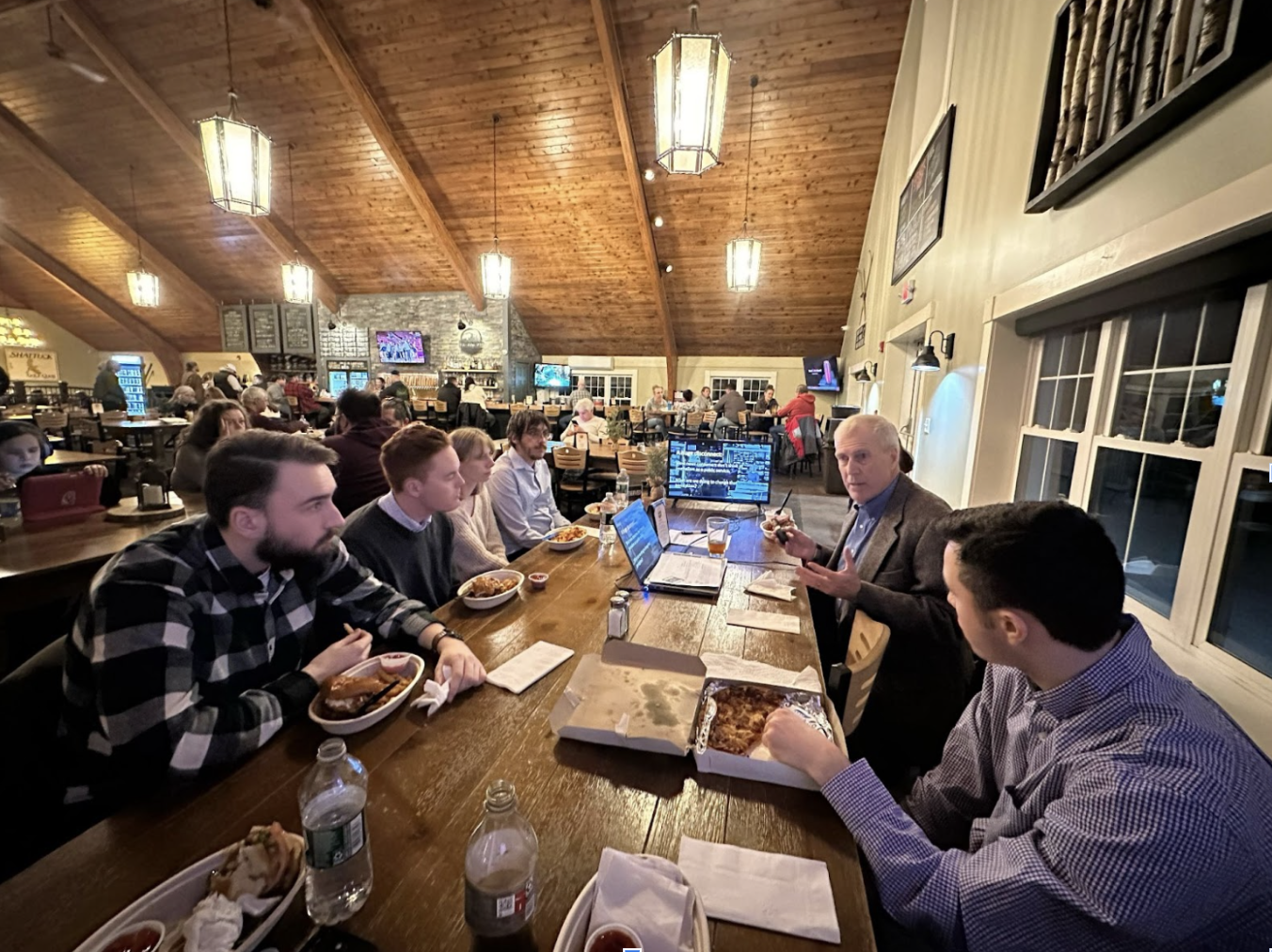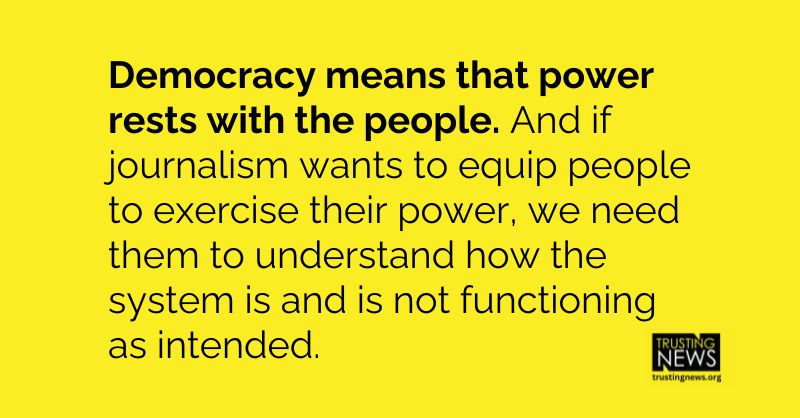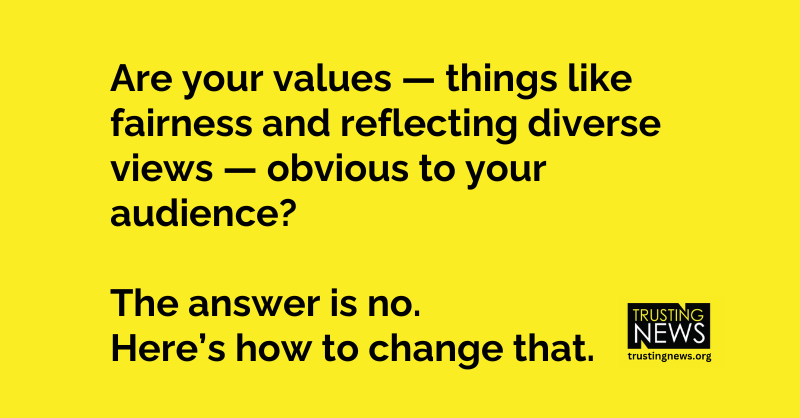
Do your public safety stories paint an accurate picture of life in your community? This post guides you through an assessment that will help you move toward coverage that builds trust.
Reinvent your crime coverage to build trust
Traditional conventions in reporting on crime can damage community trust. Our flawed coverage too often reinforces stereotypes and inequalities, stokes fear, and paints fundamentally inaccurate pictures of our communities.
We know our communities have very strong reactions to our crime coverage. They notice it, they engage with it, they complain about it, and they hold us accountable for it.
Let’s change that through an examination of the goals and routines of our public safety coverage. This post will look at some key decisions journalists make and reconsider whether our coverage is in line with our values and goals as journalists.
Ready to get started? This handout will help guide you through reevaluating your crime coverage.
Thank you to Martin Reynolds at the Maynard Institute for collaborating with us on a session about crime coverage at ONA21 and helping shape the ideas we’re presenting here.
This was first published as a series in our Trust Tips newsletter. Subscribe here.
First, a compelling before and after scenario
Michael Kilian is executive editor of the Democrat and Chronicle in Rochester. He and others from across Gannett decided to reshape how they approach crime coverage. Here’s what Kilian said for this Maynard Institute piece about the relationship between crime coverage and racial justice.
/
Kilian said his newsroom audited its coverage and found that one in five stories represented some aspect of crime coverage. “One in five is 20 percent,” he said. “There’s no way, shape or form that in Rochester . . .or anywhere else, 20% of all human activity revolves around crime. It’s just not the case, but if you read our pages every day, that’s the reality you take away.”
Such coverage is devastating, he said, noting that in some neighborhoods 90% of coverage was crime related.
“That is the story of that neighborhood to the rest of your community,” Kilian said, “even though that’s not the reality of life there. Obviously there are people there who go to church, drive buses, love their children, are coaches and musicians and everything else. But we’ve failed to tell those stories because we haven’t engaged with those communities.”
A group of Gannett papers that included Kilian’s team held listening sessions and began testing out ideas. That work led to company-wide staff training and a new mission for public safety coverage, which has been rolling out this spring and summer. (Here’s a related Washington Post column.)
The new approach involves less reliance on police as the sole source for information and more time spent adding context and multiple viewpoints. It involves fewer traditional elements of public safety coverage — mugshots, blotters, day-to-day incident reports and trial coverage — and more coverage that helps people really understand their communities.
So, how’s it going? Kilian and his colleague Cynthia Benjamin gave me the go-ahead to share a preliminary data point that is far from conclusive but still informative and hopeful.
In Gannett’s most recent brand equity study, Black readers said the Rochester Democrat and Chronicle provides content of interest to them, and the content influences positive change in the community. The numbers were significantly higher than in other Gannett markets measured. Because a significant part of Rochester’s changes involved the evolution of its public safety coverage, these results could be an early indication of progress in building trust with Black readers.
Encouraging, right?
If you’re ready to start assessing whether your crime coverage is actually serving your community, we suggest you start here.

What crimes get covered?
How do you decide what’s worth public attention? Do you make those decisions consistently, or does it depend on factors like:
- Which supervising editor is on duty
- Whether you’re fully staffed
- Whether a press release arrived at the right email address
- Which part of town the incident occurred in
- Who in the newsroom found the incident interesting or (worse) amusing
- Whether you have enough content today
- Whether you’ve met your page view goals
So often, journalists publish things without keeping the big picture in mind. Can we instead pause to ask questions like:
- Do I stand behind the community’s need to know about this incident? If asked, could I credibly defend the decision to publish?
- Do we plan to follow through to report on whether this arrest leads to charges or a conviction?
- How does this daily story contribute to the bigger picture we’re telling about our community?
Don’t forget to tell your audience
As you go through this and the following exercises, the first step is to solidify your processes internally and to be consistent about them.
Allow us to also remind you not to keep them to yourselves. When you’re ready, there are a lot of good reasons to go public with your goals and decision-making. Make them public, and invite the people you serve to hold you accountable — and to give you credit for your ethics and fairness.
As you’ve heard us say time and time again, people are continually making assumptions about your coverage. In the case of crime stories, their assumptions might include things like:
- You only covered this incident because it fit the narrative you’re pushing about this part of town being dangerous.
- You automatically believe what the police are saying and don’t bother to ask anyone else about what they saw.
- You must have run that mugshot because you wanted to make that guy look stupid.
- You probably buried the news of that incident because it would have made an advertiser look bad.
Not true? Great. So … what’s your counternarrative? Where are you on the record about your process, your goals and your ethics?

Questions to ask about your coverage
Here are some questions to help you assess your day-to-day stories to see if you’re ready to explain and defend your coverage decisions.
STORY PLAY
How much attention does crime coverage get in general? When does it lead the newscast, front page or home page? How does it fit into the general story we’re telling about life in our community?
SUSPECT INFORMATION
Are we thoughtful about when we include physical descriptions of suspects? See this example below from the Austin American-Statesman, during the early hours of a recent mass shooting event. They put a similar note on Twitter.

It’s important that newsrooms not only make thoughtful decisions during breaking news but also take time when things slow down to consider whether they need official guidelines or policies to support responsible coverage long-term.
Other questions about suspect identification: Are we thoughtful about when and why we run their mugshots? That issue was revisited at WCPO last year. Also: Do we have clear guidelines about when we use suspects’ names? The Associated Press just announced new practices around that.
OUR TRUSTED SOURCES
We’ve worked with newsrooms on ways to explain to their audiences who journalists trust to provide information. Why is this dataset, source or research report credible and worth passing on? The way that question relates to coverage of crime has taken on new importance since the police’s handling of George Floyd’s death. This PolitiFact piece analyzes and links to an official police statement after Floyd’s death. It doesn’t take much to imagine how much different the aftermath would have been if video evidence hadn’t contradicted this account so swiftly.

As scholar Danielle Kilgo wrote for NiemanLab, journalists have a tendency to set skepticism aside in favor of a “police said” narrative.
FOLLOW THROUGH
Do we follow up on stories about arrests, so people who have had their worst days chronicled also get the resolutions to their cases reported? Are we transparent with our community about our policies and conventions? This piece from the Coloradoan, created in response to reader curiosity and assumptions, does a great job of making the newspaper’s priorities clear.

REQUESTS TO TAKE CONTENT DOWN
Do we have guidelines for evaluating requests to unpublish or modify crime stories in the archive? Is there a request process? If so, is that process public, and is it accessible to people with varying levels of legal assistance and expertise? Are we clear with our community about our ethics and standards? One great resource to this question is the Unpublishing the News project from Deborah Dwyer’s Reynolds Journalism Institute fellowship. The site has resources and an editor’s forum, and Dwyer is creating a repository of policies newsrooms can use as references. (Disclosure: I’m on the advisory board for Dwyer’s project.)

What kind of engagement are you inviting?
Journalists acknowledge that the comment sections under crime stories tend to bring out bigotry and racism. Commenters feel all too emboldened to publicly judge which elements of suspects’ and victims’ lives likely contributed to their involvement in the situation — their race, ethnicity, age, attractiveness, neighborhood, social class — the assumptions tend to come quickly and unapologetically.
Here are some questions we’d love for you to ask in your newsroom related to the interactions you are inviting and allowing after you hit publish, on your website and on your social media.
ARE WE READING THE COMMENTS?
Regular readers have heard our periodic reminders that conversations around journalism are part of our responsibility — especially where we are the hosts of those conversations and are basically inviting reactions. How can we then throw up our hands when bad behavior emerges, as if we’re surprised by it and unequipped to manage it?
- Do we read the comments? Too often, the conversation stops here because newsrooms *aren’t* monitoring and responding to conversations much at all. When comment sections are neglected, what incentive do people have to behave themselves?
- Do we have policies that prohibit bigotry, racism and personal attacks in the conversations we host? Are we on the record stating what behavior is encouraged and what is prohibited? Do we use and reference those policies on social media, not just on our websites?
- Do we feel empowered to moderate conversations? As a newsroom, do we make time for responding? Do we have language on hand to respond to common problematic situations? Do we have standard practices for deleting comments, warning users and banning users that encourage consistency and minimize situational, individual judgment calls.
HAVE WE CONSIDERED TURNING COMMENTING OFF?
Some newsrooms have standard practices around when to turn off comments on types of stories on their websites. If that’s possible in your CMS, it’s worthy of discussion.
Facebook also has enabled a function that basically achieves the same purpose — the ability to turn off comments for everybody except for profiles and pages that are mentioned in the post. So if you don’t mention any other accounts, no one can comment.
As always when changing your policies or practices, consistency and transparency are key. Decide as a newsroom when you will and won’t allow comments. Come up with guidelines that you can execute consistently. Then tell your audience about your decisions. Make sure to have a concise explanation somewhere that you can link to when people question or complain about your actions.
ARE WE THOUGHTFUL ABOUT WHAT WE SHARE ON SOCIAL MEDIA?
We know crime stories often get a lot of engagement on social media. People click on them, comment on them and share them. But is that worth what happens afterward?
Your social media feed is how many people in your community interact with you. It’s how they get a sense of who you are and what you prioritize. What you share there is a reflection of what you think your community values and should be talking about.
We hear from news consumers regularly that journalists overemphasize crime. They want to know why we’re trying to make them afraid of where they live. They ask why the picture we paint doesn’t match what they see in their own lives.
Perhaps you’re thoughtful about when and how you cover crime generally, as laid out in the previous two newsletters. But don’t forget that your Facebook posts are the front door to your organization for a lot of users. And if your page is a stream of mugshots and incident reports, that’s what will come to mind when people think about your brand.
The incentives for posting crime coverage can be powerful ones, we know. High engagement keeps your numbers up, and it’s easy to see a lot of comments as a sign of success. Remember, though, that high engagement posts keep showing up in users’ feeds, reinforcing their sense of your priorities.
One option on Facebook is to use the “stop news feed distribution” publishing option, to keep a post from being continually shown after a specific time limit without actually deleting it from your page.

Do your coverage and metrics align with your mission?
It’s a good idea to step back from our coverage and evaluate what we’re accomplishing and what our goals are. Is what we’re publishing good and right and valuable — for the people we’re covering, for the larger community we serve and for our journalistic mission?
We find that too often, crime stories are “good” in that they help newsrooms meet metrics goals. Maybe they’re good for social media engagement, as we wrote about last week, even when the type of engagement they lead to fuels stereotypes and invites bigotry.
Maybe the stories are “good” in that they drive ratings or page views — as coverage that stokes fear often does, whether the fear is valid or exaggerated.
Maybe the daily crime stories are helpful in that they are plentiful and easy to produce, filling the news holes when needed. Maybe they help us meet quotas for stories in general or for stories that have a breaking news label.
But those considerations should not overshadow the mission we have to paint a full, accurate, nuanced picture of the communities we serve.
We need to assess the implications of our coverage. Why are we doing it? Who does it serve and who does it harm? How do people in our community feel about it? What concerns do they have about crime, public safety and policing? Are we empowering people to understand, connect with and improve their lives, families and neighborhoods?
We have a framework to share with you today that we heard from Martin Reynolds at the Maynard Institute, who collaborated with us on a session on crime coverage at ONA21. He introduced us to the “mission metrics” created by the team at The Oaklandside. Executive Editor Tasneem Raja told the Local Media Association the metrics are used to help her team stay true to its founding values. Their list of mission metrics includes:
- Does this article show an effort to listen to the community?
- Does this story help connect residents with resources?
- Does this story reframe harmful narratives?
Reynolds was inspired by their work to brainstorm how this approach could apply to crime coverage. Thank you to him for agreeing to share his list here.
MISSION METRICS FOR CRIME COVERAGE (from Martin Reynolds of the Maynard Institute)
Aim to produce crime coverage that:
- Contextualizes the causes of crime, not merely instances of crime.
- Examines the quality of policing.
- Interrogates the version of events provided by police and law enforcement.
- Doesn’t cause harm to the community or individuals.
- Highlights community-based solutions to crime.
- Doesn’t disproportionately reflect one particular community or group.
- Is coverage of a case the community cares deeply about.
- Is covered gavel to gavel.
What would you add?
What are your challenges with crime coverage?
What could you use help navigating in your own newsroom? And what stands in the way of more thoughtful, more consistent coverage? Feel free to reach out to our Trusting News team on Twitter or via email to share your experiences, brainstorm ideas or ask for help.
At Trusting News, we learn how people decide what news to trust and turn that knowledge into actionable strategies for journalists. We train and empower journalists to take responsibility for demonstrating credibility and actively earning trust through transparency and engagement. Subscribe to our Trust Tips newsletter. Follow us on Twitter and LinkedIn. Read more about our work at TrustingNews.org.

Executive Director Joy Mayer (she/her) founded Trusting News in 2016 after a 20-year career in newsrooms and teaching. She lives in Sarasota, Florida, and can be reached at joy@TrustingNews.org.



